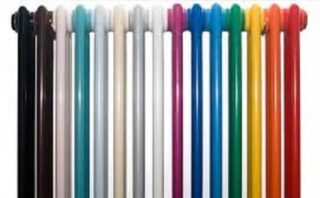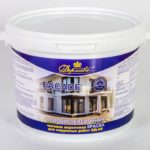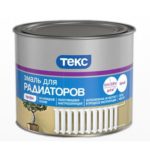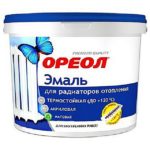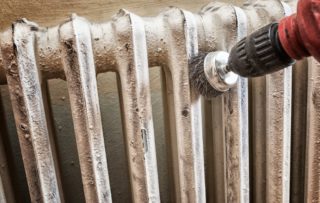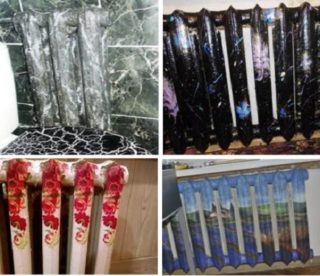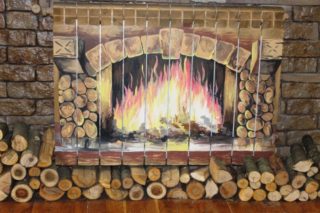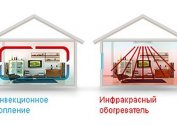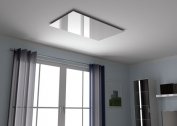The range of paints for painting pipes is wide. All of them differ in their characteristics, method of application. The most important selection criterion is durability. Correctly selected paint will protect the pipeline from rust and emphasize the individual characteristics of the room.
Paint requirements
To choose the right paint and varnish product, it is necessary to understand its functions. The main task of the paint is to protect the pipes from corrosion. Decorative properties are also important - the color scheme of the pipeline should not stand out against the background of the general interior of the room.
It is important to consider the operating conditions. The temperature in the heating system ranges from 40 ° C to 80 ° C. Paint should be resistant to these values and not emit harmful substances into the atmosphere. Also, the coloring agent should not have a smell.
For these reasons, we can conclude that the paint should have the following properties:
- Resistance to temperature jumps. Possibility of holding 90 ° C.
- Abrasion resistance.
- Resistance to aggressive environmental influences.
- Possibility of laying on a rusty base.
- Complete safety for human and animal health. Lack of smell.
- Wide color palette.
All these conditions correspond to special paints marked "for radiators".
The choice of paints
Oil products are not suitable for painting pipes and risers. They dry for a long time, have an unpleasant odor, and also fade over time. In the coloring composition must be present corrosion inhibitor.
The following types of paints are suitable for heating iron pipes:
- Alkyd enamels. These are common compounds that have a low cost. They have an unpleasant smell when the pipes are heated, and may fade over time. Dry in 24 hours.
- Acrylic Enamels. The composition contains organic solvents, due to which there is a small specific smell. They have a wide color palette of glossy and matte shades and dry in one hour. Prior to application, priming of the metal surface of the pipe may be required. The brightness of the color is maintained throughout the entire operation period.
- Water dispersion formulations. These are the safest types of paints. They have a long service life and brightness of the coating. They dry quickly and are odorless.
- Water dispersion composition
- Alkyd enamel
- Acrylic enamel
Popular brands include Haytskorperlak, Mipaterm 600, enamel GF-0119, primer-enamel UNIPOL.
The choice of color depends only on the design of the apartment and the premises, as well as the preferences of the owners. There are paints for silver, bronze, copper, as well as funds with the possibility of applying patterns. The best heat transfer is possessed by dark paints.
The amount of paint depends on the flow per meter. This value is multiplied by the area of the painted surface of the pipes, and a margin is added. Estimated in advance.
Instructions for painting pipes
In order for the result to be durable, it is necessary to correctly paint polypropylene pipes, following the technology.
Before painting the pipes, it is necessary to prepare the surface. The quality and durability of the coating depends on the proper cleaning of the pipes. You need to work in personal protective equipment - glasses, gloves, work clothes.
Cleaning algorithm:
- Protecting walls, floors and surrounding objects with old newspapers, oilcloths, films.This will protect things from getting paint on them for heating pipes.
- Cleaning pipes from the old layer of paint and dust. Thin layers can only be left and cleaned with sandpaper. White spirit and other slightly alkaline solutions are used to degrease surfaces. A thick layer of paint can be removed using solutions for washing off, a building hair dryer, a grinder with a brush nozzle.
After cleaning the surface, a primer layer is applied if there are no special protective components in the paint composition. When using 3 in 1 paints and varnishes with a rust converter, preliminary priming can be omitted.
Work must be carried out in a well-ventilated area, even if paint is chosen for odorless heating pipes. This is due to the fact that it contains substances that are not recommended for inhalation. You also need to work in a respirator.
Paint application
There are several ways to color pipes:
- With a brush. This is the most common and affordable way of painting. The substance is applied in a thin uniform layer without smudges. It is important to choose a good brush, as in cheap products, bristles fall out, which can remain on the painted surface.
- The roller. Suitable for painting openly located pipelines in the basement, as well as the front surface of heating circuits. Give uniform application of paint for pipelines.
- Spray can. This is the fastest and most convenient way to apply paint. The mixture is sprayed for several seconds onto the prepared surface. Expensive aerosol cans allow you to create a beautiful decorative coating.
- With a spray gun. Professional spray guns are used by specialists who often perform this type of work. The spray gun makes it possible to quickly apply paint in a uniform layer with a minimum consumption. This is the fastest drying option.
After the paint has completely dried, you can use the pipeline.
Paint recommendations
Experts have developed a number of tips that will help even a novice to color the pipeline:
- Remove the old coating carefully, being careful not to damage the pipes.
- Flushing paint is a toxic substance, the vapor of which is better not to inhale. To open a container with such a mixture, you will need to carefully hold the bottle with your throat away from you. It is necessary to provide good ventilation in the room so that harmful substances go outside.
- If it is possible to dismantle parts of the heating system, it is better to paint on the street outside the house. This will make work easier and safer. The removable device can be rotated in any direction to reach and paint hard-to-reach spots.
- Painting should be carried out during the shutdown of the heating system. If the pipes are hot, the paint will lie in uneven layers, and also stains and swellings will appear.
- In the case of work in the heating season, shut off the valves on the batteries and wait for them to cool. The pipes will still be hot, but it will be possible to color the batteries evenly and efficiently.
- Staining should be carried out with smooth, gentle movements from top to bottom to get a thin layer.
- The surface must be painted on all sides. Otherwise, the unpainted part will rust faster.
Even a novice without work experience can carry out independent painting of water supply and heating pipes. It is only important to choose the right paint and varnish materials, thoroughly clean the surface and choose a convenient method of application.
